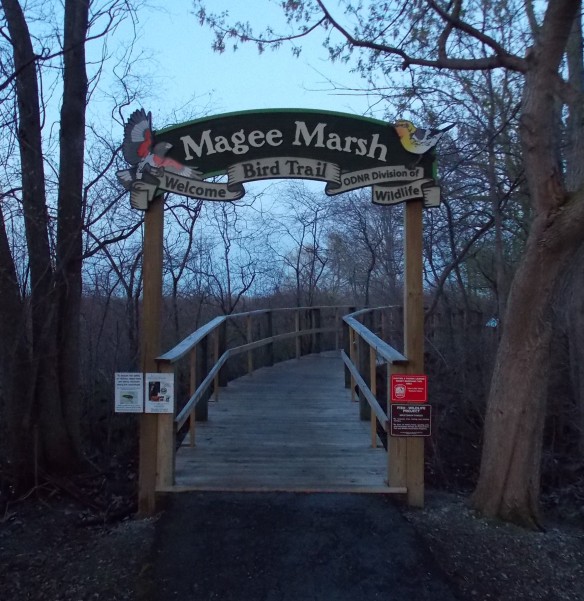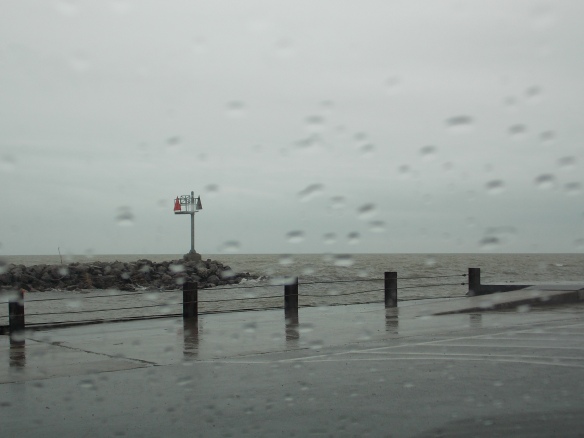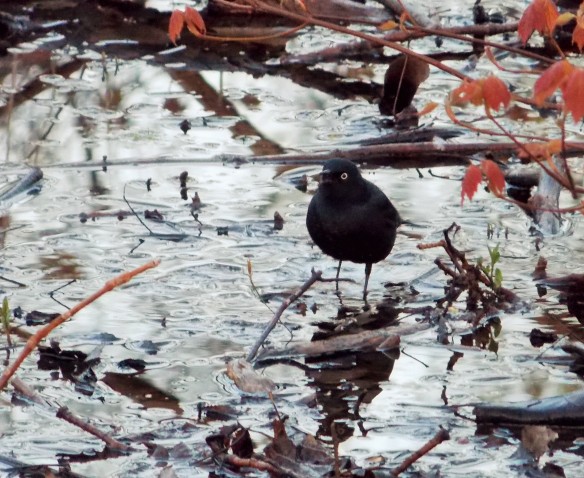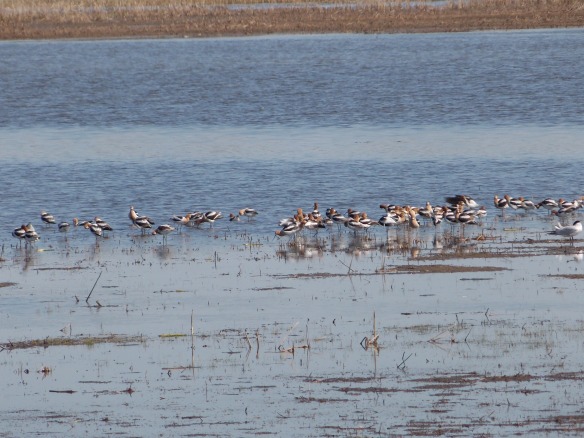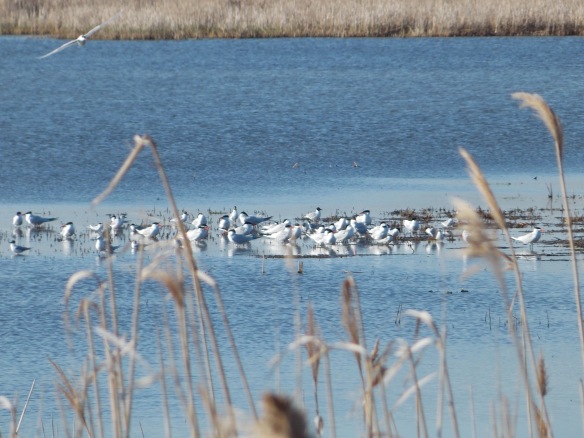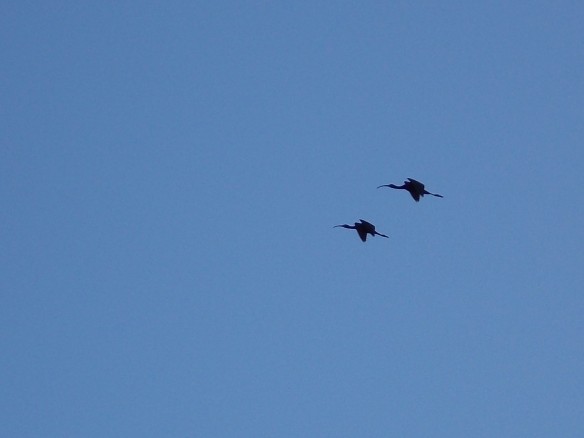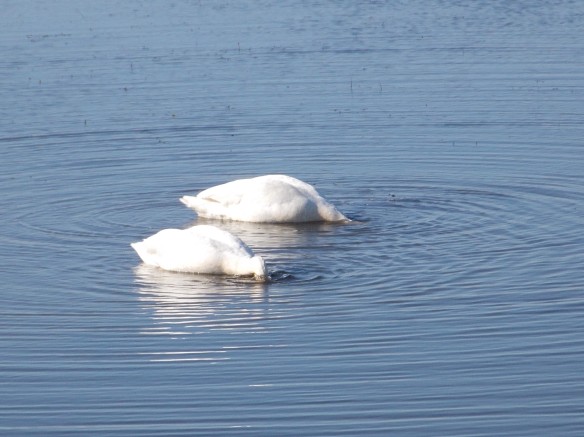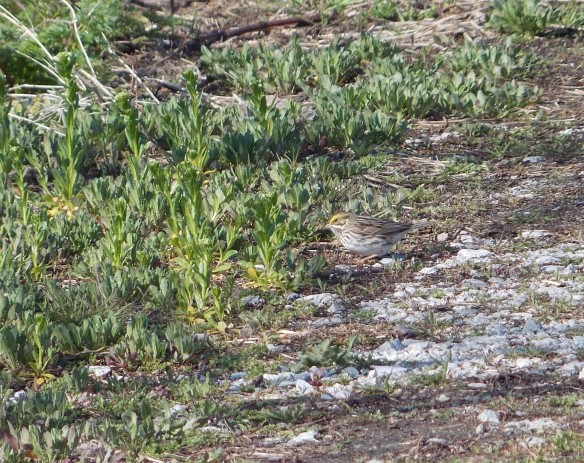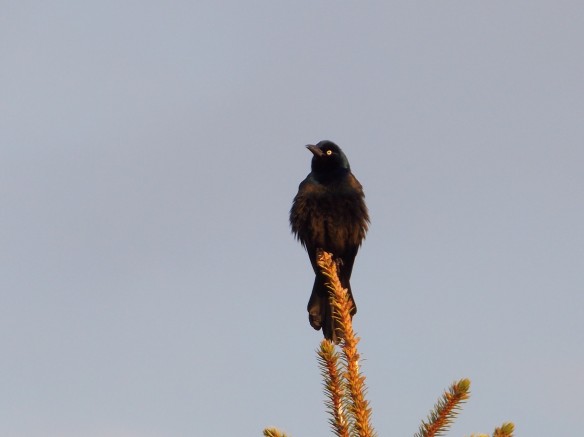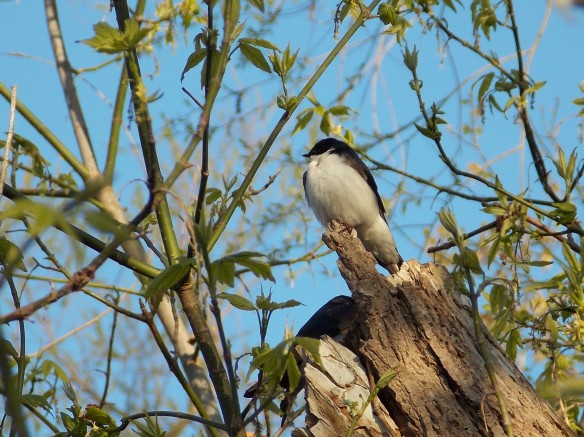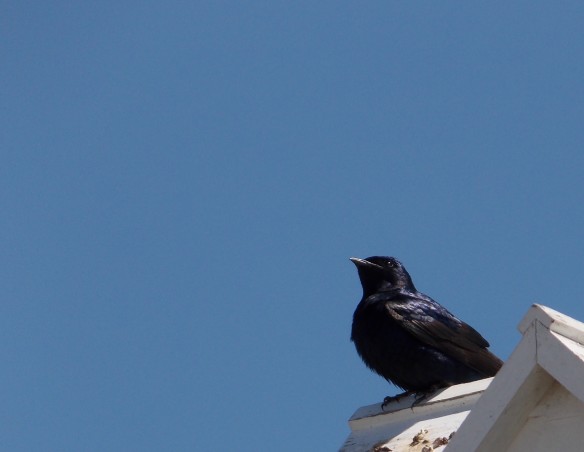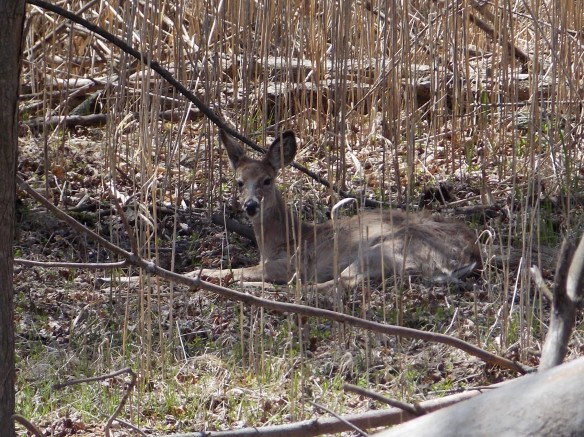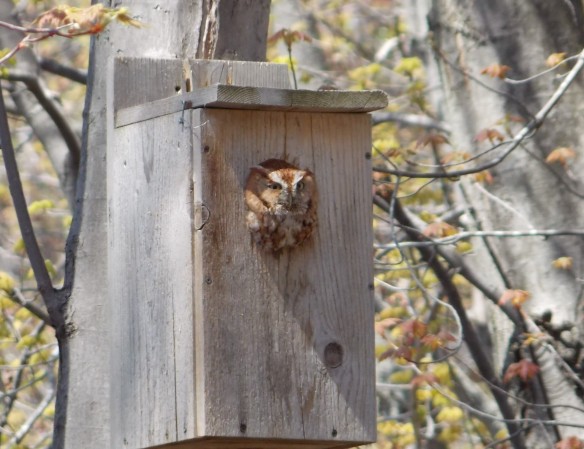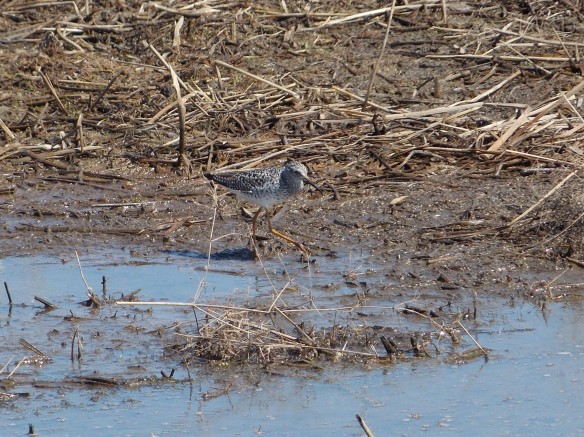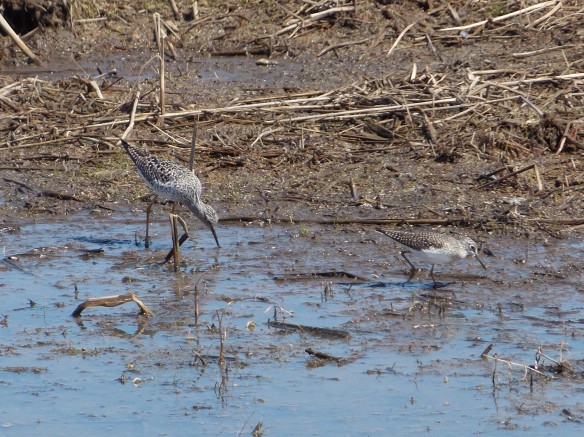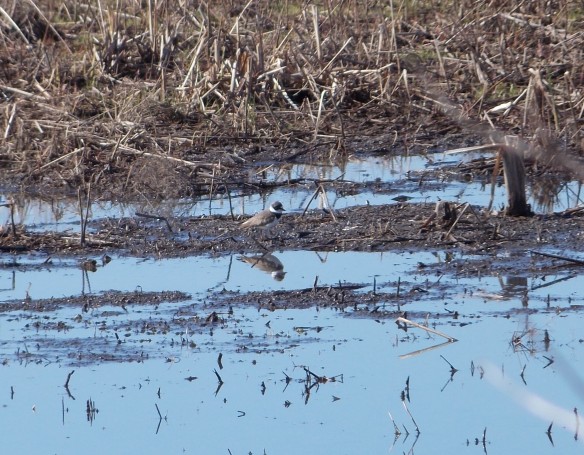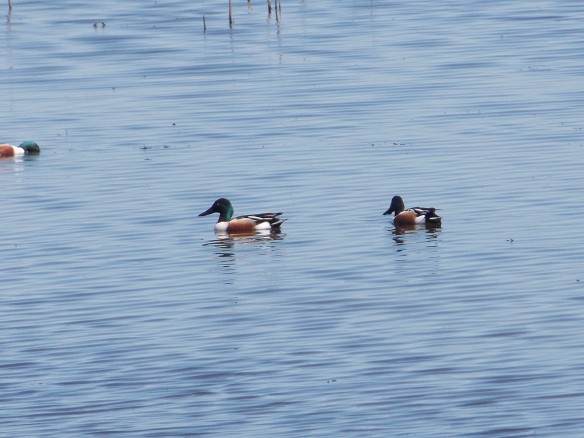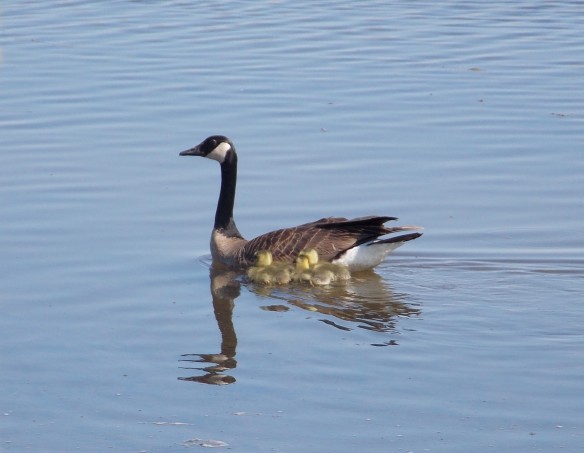Everyone eventually has a birding day when they put together a plan with high expectations, only to find that it’s all for naught. Either the birds aren’t there, or the plans change, or conditions are poor for viewing. Today was not one of those days.

Welcoming Committee
I spent the morning and early afternoon birding Eagle Marsh. It used to be about a 25 minute ride for me, but from my new house it takes over an hour. No matter. The weather was awesome. And I had a pretty great sign of things to come in the form of three amigos perched on the wires over the trailhead at the marsh: Green Heron, Mourning Dove, and Red-winged Blackbird.

The Fourth
Then an Indigo Bunting joined them for good measure.

Green Heron
Of all the birds to be perched on a wire, this one was pretty weird.

Purple Martins
The good signs kept coming with a tree full of Purple Martins just a little way down the trail. PUMA was (somehow) a county bird for me and the first new green bird on the day.

Common Gallinule
Next up, a state bird popped its head out of the reeds and stared me down for several long moments before I could figure out what the hell it was. Juvenile Common Gallinules are weird. I wasn’t expecting this bird at all, least not in this particular plumage. I have only seen adults before, and those were in Florida. My mind cycled in the following order: Wood Duck, Sora, Virginia Rail. Nope.

Bank Swallow
Before checking out the other end of the marsh, I stopped to admire the massing post-breeding dispersal birds. These Bank Swallows obliged for a photo.

Pectoral Sandpiper
At the other end of the marsh was where I realized it would be a phenomenal birding day. Not only were there huge mudflats hosting hundreds of birds, the lighting was great, the birds stayed put, and I got some great shots. I like this Pectoral Sandpiper and its reflection.
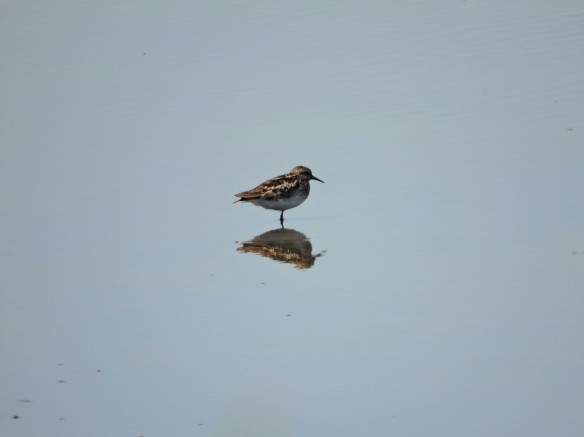
Least Sandpiper
The shorebirds kept coming, and next on the buffet was Least Sandpiper.

Solitary Sandpiper
A duo of Solitary Sandpipers followed close behind. This was a pretty bad miss for me last year, so these views made up for it.

Spotted Sandpiper
Continuing a theme, I present to you: Spotted Sandpiper.

Killdeer
And a Killdeer, because why not?

A whole mess of birds
I also lucked into some Caspian Terns, which are annual but uncommon and irregular in Allen County. Two flyovers on the east end plus two more chilling with gulls on the west end for a total of four individuals was a pretty good tally. As you can tell from the photo above, there was a lot to keep track of, and I almost overlooked the small white blob just to the left of the terns.

Bonaparte’s Gull
With its head tucked, all I could see was the edge of a black cap making me think it might have been one of the sterna terns, but it finally picked its head up showing an extensive black hood and a black bill, good for Bonaparte’s Gull. This was my best find of the day, another county bird, and apparently the first July record for the species in this part of the state.
I ended the day with seven new green birds, three of which were new for me in Allen County and one of those new for Indiana. My 2017 green list is currently at 142 species, only one less than all of last year. 150 will be totally obtainable with “easy” birds (I say that without somehow seeing them yet) left to pick up including Pileated Woodpecker, Scarlet Tanager, both yellowlegs, and a couple of fall warblers to push me over the hump, and hopefully one or two unexpected things. If you had a birding goal this year, how is it coming along now that we are midway through?

